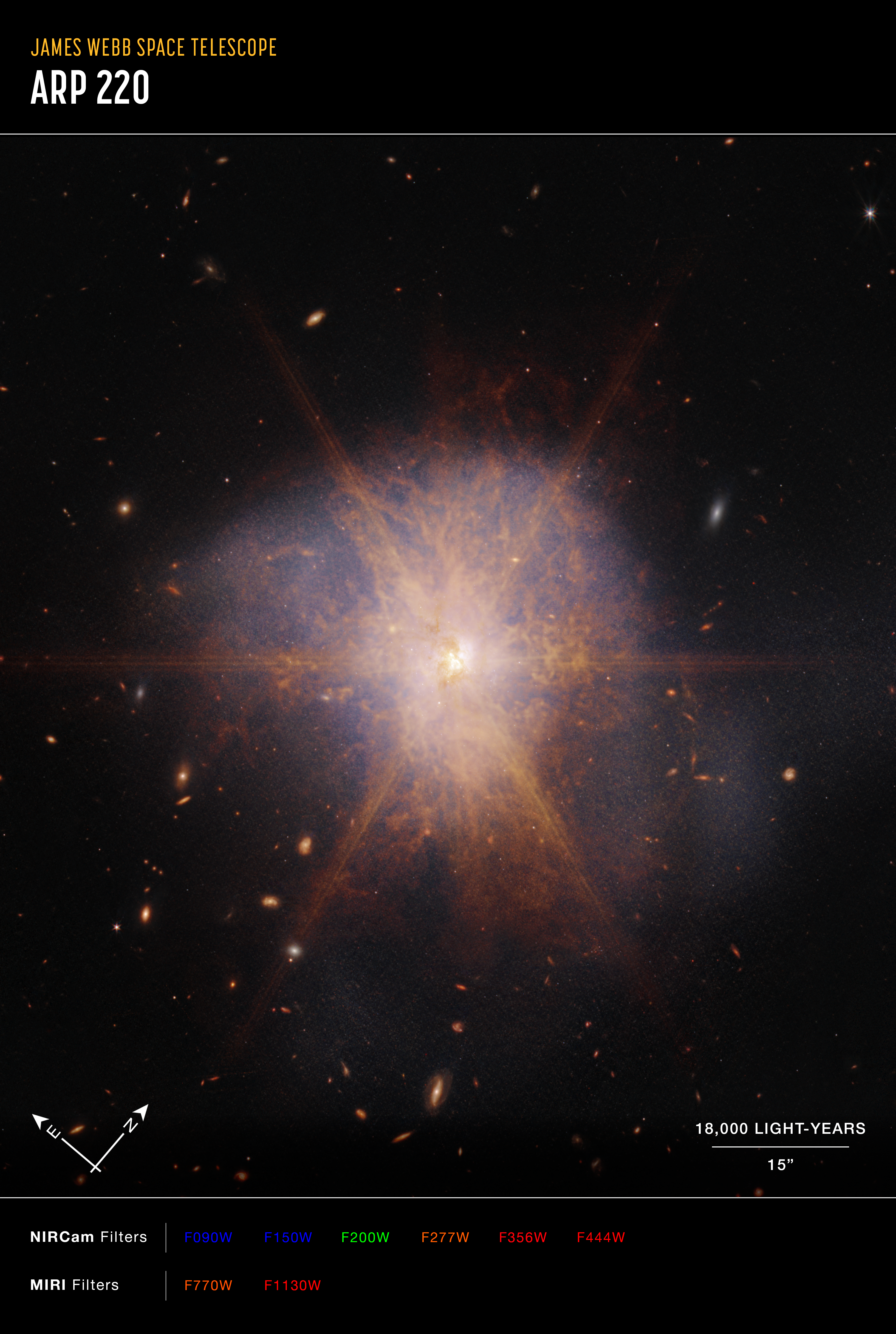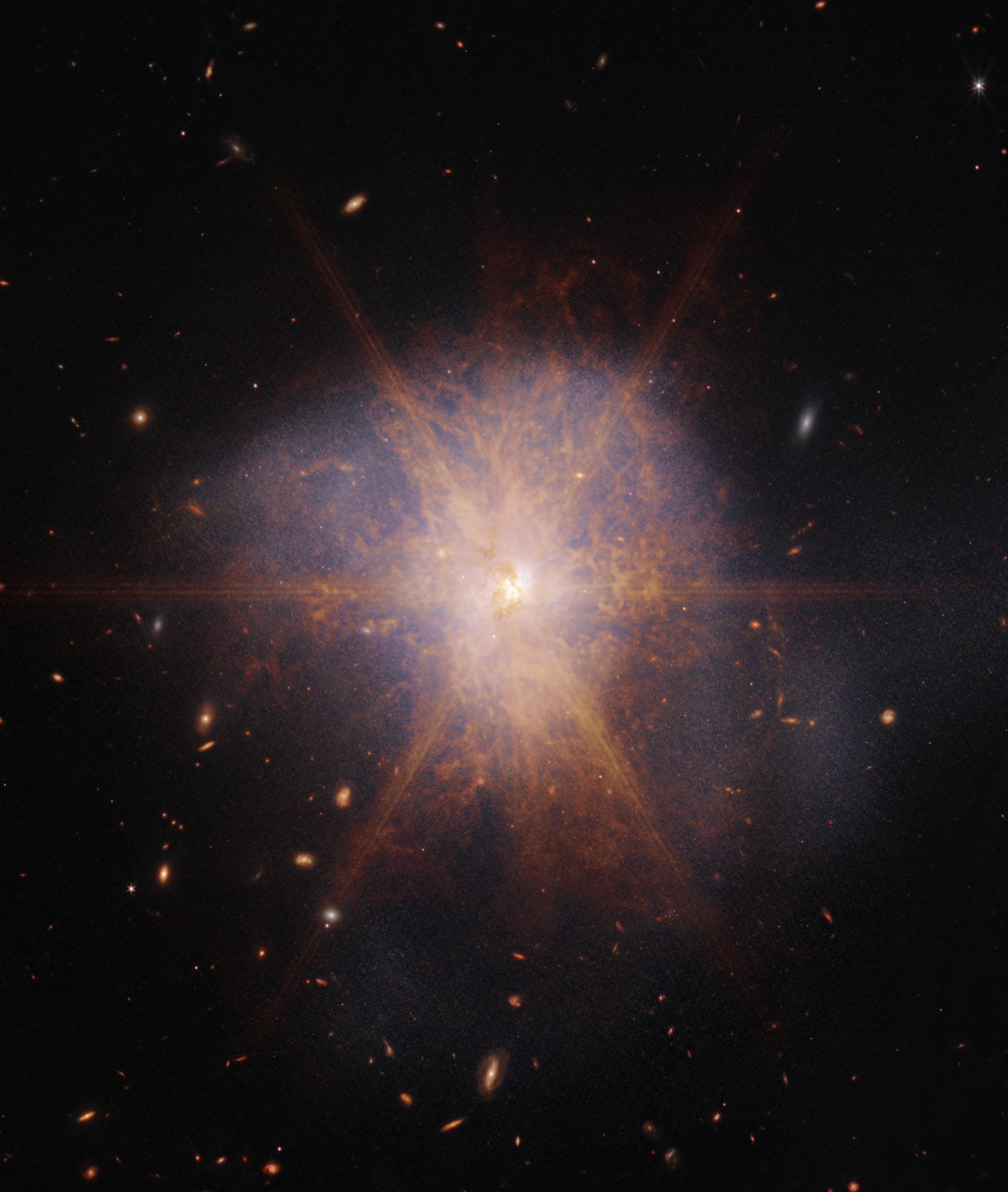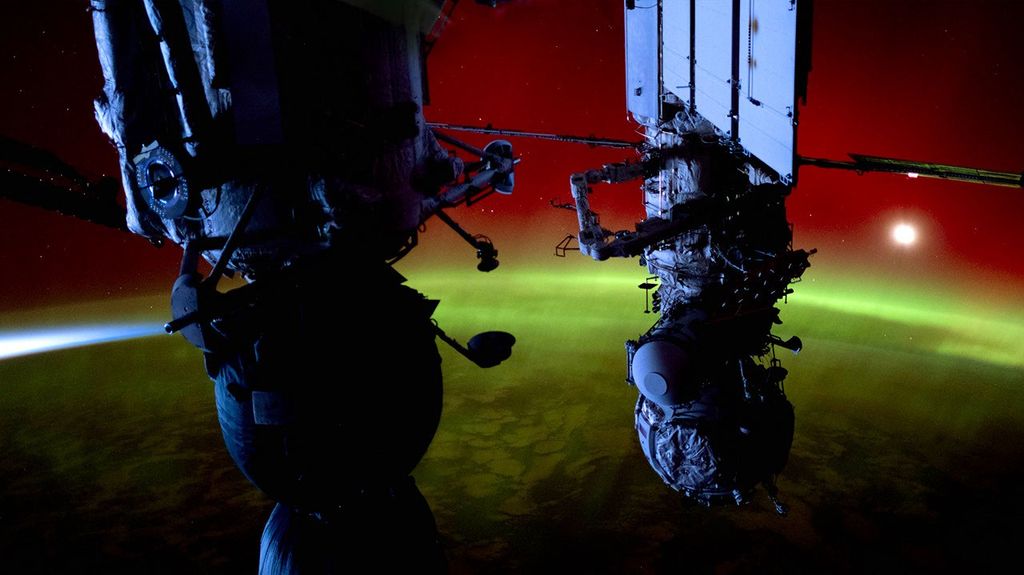1 min read
Arp 220 (NIRCam and MIRI Compass image)

Image of Arp 220 captured by Webb’s Near-Infrared Camera (NIRCam) and Mid-Infrared Instrument (MIRI), with compass arrows, scale bar, and color key for reference.
The north and east compass arrows show the orientation of the image on the sky. Note that the relationship between north and east on the sky (as seen from below) is flipped relative to direction arrows on a map of the ground (as seen from above).
The scale bar is labeled in light-years, which is the distance that light travels in one Earth-year. (It takes 18,000 years for light to travel a distance equal to the length of the bar.) One light-year is equal to about 5.88 trillion miles or 9.46 trillion kilometers. The field of view shown in this image is approximately 120,000 light-years across.
This image shows invisible infrared wavelengths of light that have been translated into visible-light colors. The color key shows which filters were used when collecting the light. The color of each filter name is the visible-light color used to represent the infrared light that passes through that filter.
About the Object
- R.A. PositionR.A. PositionRight ascension – analogous to longitude – is one component of an object's position.15:34:57.72
- Dec. PositionDec. PositionDeclination – analogous to latitude – is one component of an object's position.+23:30:05.92
- ConstellationConstellationOne of 88 recognized regions of the celestial sphere in which the object appears.Serpens
- DistanceDistanceThe physical distance from Earth to the astronomical object. Distances within our solar system are usually measured in Astronomical Units (AU). Distances between stars are usually measured in light-years. Interstellar distances can also be measured in parsecs.250 million light-years (100 million parsecs)
- DimensionsDimensionsThe physical size of the object or the apparent angle it subtends on the sky.Image is approximately 120,000 light years across.
About the Data
- Data DescriptionData DescriptionProposal: A description of the observations, their scientific justification, and the links to the data available in the science archive.
Science Team: The astronomers who planned the observations and analyzed the data. "PI" refers to the Principal Investigator.This image was created from JWST data from proposal: 2739 (K. Pontoppidan)
- InstrumentInstrumentThe science instrument used to produce the data.NIRCam, MIRI
- Exposure DatesExposure DatesThe date(s) that the telescope made its observations and the total exposure time.2 June 2022, 4 June 2022
- FiltersFiltersThe camera filters that were used in the science observations.NIRCam>F090W, F150W, F200W, F277W, F356W, F444W MIRI> F770W, F1130W
- Object NameObject NameA name or catalog number that astronomers use to identify an astronomical object.Arp 220, IC 1127, VV 540, KPG 470, UGC 09913
- Object DescriptionObject DescriptionThe type of astronomical object.Interacting Galaxies
- Release DateApril 17, 2023
- Science ReleaseWebb Captures the Spectacular Galactic Merger Arp 220
- CreditImage: NASA, ESA, CSA, STScI; Image Processing: Alyssa Pagan (STScI)

These images are a composite of separate exposures acquired by the James Webb Space Telescope using the NIRCam and MIRI instruments. Several filters were used to sample wide wavelength ranges. The color results from assigning different hues (colors) to each monochromatic (grayscale) image associated with an individual filter. In this case, the assigned colors are: Blue: F090W, F150W Green: F200W Orange: F277W + F770W Red: F356W +444W + F1130W
Related Images & Videos

Arp 220 (NIRCam and MIRI image)
Shining like a brilliant beacon amidst a sea of galaxies, Arp 220 lights up the night sky in this view from NASA’s James Webb Space Telescope. Actually two spiral galaxies in the process of merging, Arp 220 glows brightest in infrared light , making it an ideal target for Webb....
Share
Details
Laura Betz
NASA’s Goddard Space Flight Center
Greenbelt, Maryland
laura.e.betz@nasa.gov
NASA, ESA, CSA, STScI
Alyssa Pagan (STScI)

























